Splitdorf Magnetos
Splitdorf manufactured many, many magnetos
over the years. It is beyond the scope of the page to cover all of
these. What follows is a brief discussion of some of the Splitdorf
magnetos used on American motorcycles.
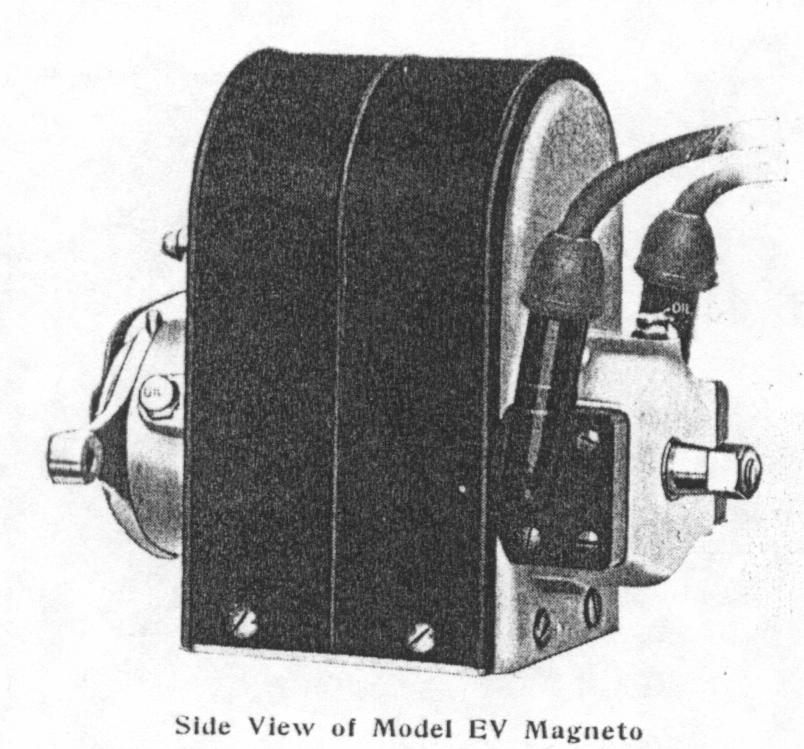
E
series
The "E" series high tension magnetos were built for a
variety of motorcycle configurations; single cylinder (EU), V-twins in
42, 45 and 50 degrees (EV), 180 degree twin (E2), and four cylinder (EU4).
The construction of these magnetos include an aluminum base to which the
pole pieces are secured, and between which revolves and armature on two
annular ball bearings. A pair of tungsten steel magnets straddle
the pole pieces. These are covered by a ribbed aluminum cover that
is designed to keep out dust and dirt. These were used on Indians
as well as other makes of the early teens.
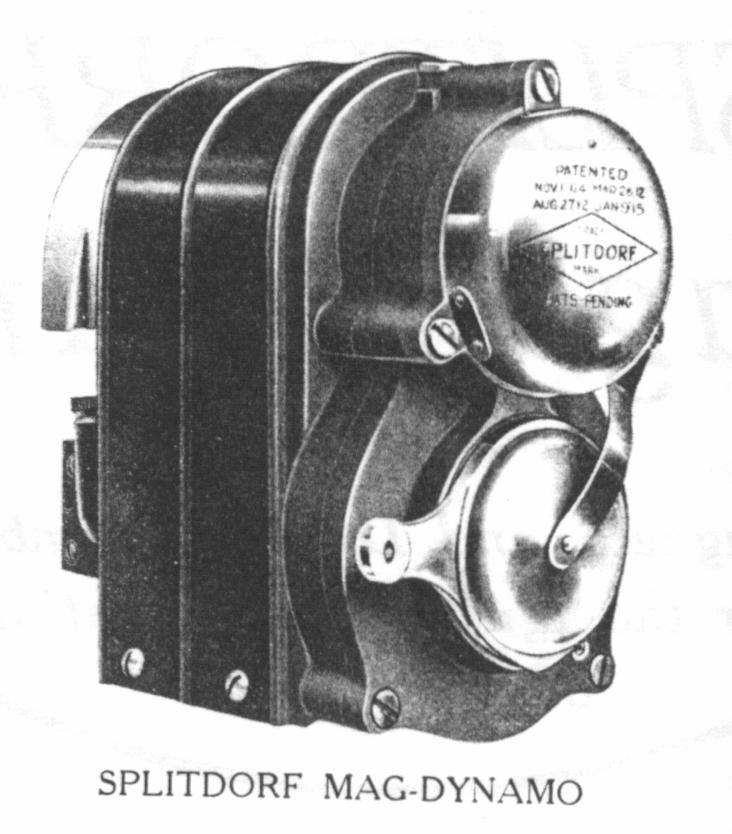
Mag-Dynamo
The Mag-Dynamo was a combination high
tension magneto and dynamo (generator) available from about 1915-1918.
The dynamo armature which generates the direct current is placed above
the commutator. The magneto armature is located below. The
magnets are not of the permanent type, but are of the "electro" type, excited
at first by the battery or the first few revolutions of the generator.
The dynamo and magneto are seperate and distinct otherwise , but combined
in one unit. It was offered as an option to replace the standard
magneto when eletric lighting was specified. These were used by Indian,
Excelsior, Dayton, Thor, Pope, Harley-Davidson and Merkel.
Rated output of the generator was 3.0 amps, 7.5 volts at 1400 engine rpm
(about 30 mph).
Splitdorf Mag-Dynamo parts
list
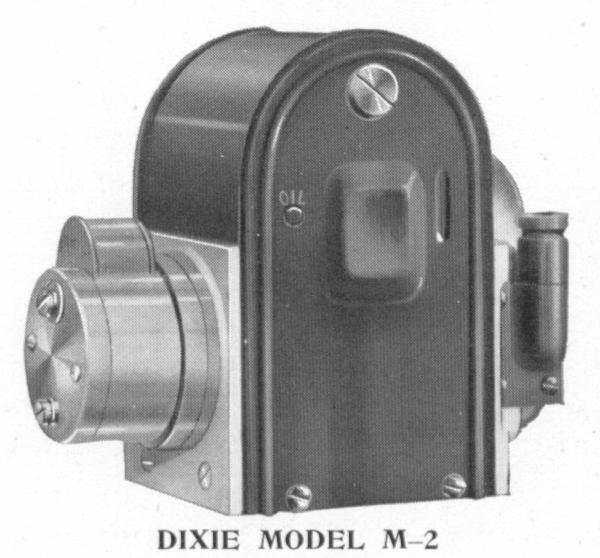
Dixie
Magneto
The Dixie was an revolutionary magneto
used by automobiles, airplanes, boats, stationary engines and motorcycles.
Perhaps a testament to the Dixie's versatility and dependability was that
it was manufactured in a wide variety of models from 1 to 12 cylinders.
Two important aspects of the Dixie are 1) it uses a rotating magnet principle
in which the magnetic lines of force do not have to change direction with
each revolution. This allows for a hotter spark at low speed.
2) With most magnetos the intensity of the spark is dependent on the position
of the advance lever. A specific position will provide the most efficient
spark, any other position will cause a decrease in the intensity of the
spark. This is not so with the Dixie. It's design allows for
the spark advance position to have no ill effect on the quality of the
spark. One problem I have found with the Dixie is the base.
It is made of a zinc based alloy (similar to pot metal) which does not
stand the rigors of time well. It tends to absorb moisture then develop
splits or cracks. This can get so bad that the unit become unusable.
I had this problem on an original 1916 Indian Powerplus a few years ago.
I searched all over for a good Dixie or just a good base. Eventually
I found one but only after seeing many with cracked bases.
For an excellent, in-depth discussion
of the Dixie and its operation check out Paul Alting Van Geusau's Dixie
web page.
Splitdorf Dixie mageto parts
list
Aero
The Aero is a further development of the Dixie.
Its appearance is very similar but with more distinct bulges on its sides.
It was used on the new Indian Scout in 1920.

Model
S
The model S appeared around late 1922
and continued in production until 1928. It is an inductor type high
tension magneto with an aluminum base and one piece steel rotor shaft.
The model S was made in a variety of motorcycle configurations including
single cylinder (S-1), V-twin (S-2) and Four cylinder (S-4). As a
side note, in my collection I have a very unusual 3 cylinder aircraft version
as well. Unfortunately I don't know its specific application.
The model S is easily identified by the "Model -S" cast into its base and
the steel wire bail used to retain the distributor cap. Further variations
of each type are identified by a small brass tag on the side. Two examples
are S2-1604 = Right hand rotation - 45 degree firing, S2-1611= Left
hand rotation - 42 degree firing
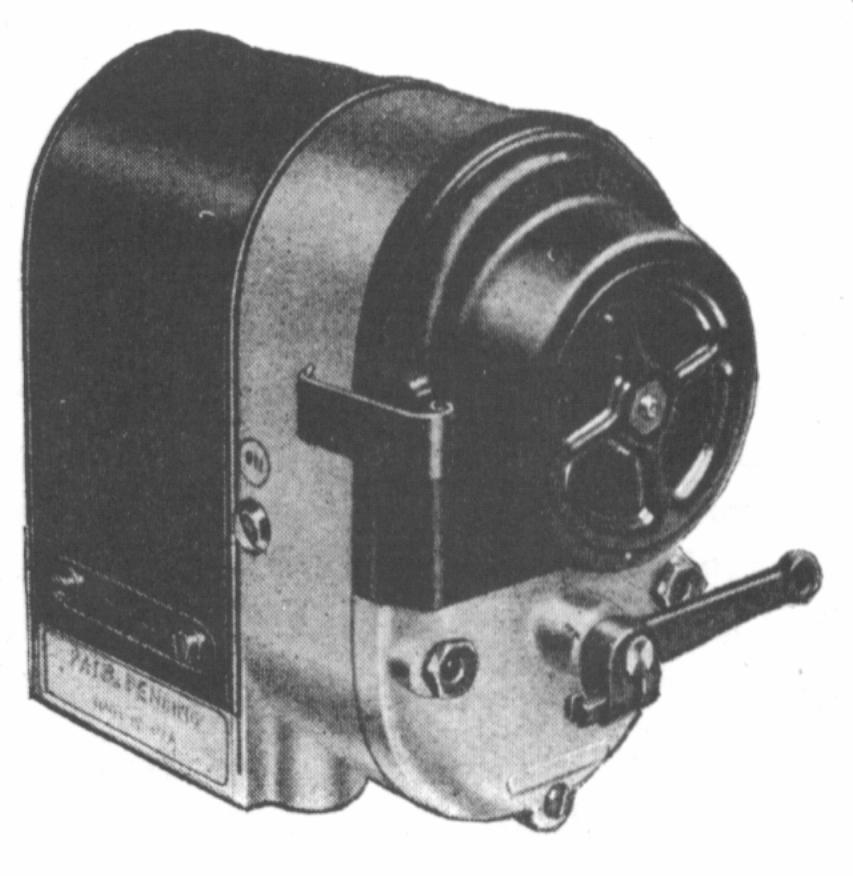
Model
NS
This model is a further development
of the model S. It came into use in early 1928 and continued until
1932 or 1933. Identification of this model can be confusing thanks
to Splitdorf's use of the same base casting as the model S. As described
above, "Model - S" is cast into the base. These were made in 2 cylinder
(NS-2) and 4 cylinder (NS-4) versions. An NS can be easily identified
by the spring clips that retain the distributor cap instead of the wire
bail used on the model S. Specific applications are identified by
the small brass tag on the side; NS2-2522=Right hand rotation-42 degree
firing (Indian twin), NS2-2524=Right hand rotation-45 degree firing (Excelsior
twin), NS4-2588=Left hand rotation (Indian Four), NS4-2586=Right hand rotation
(Excelsior-Henderson).
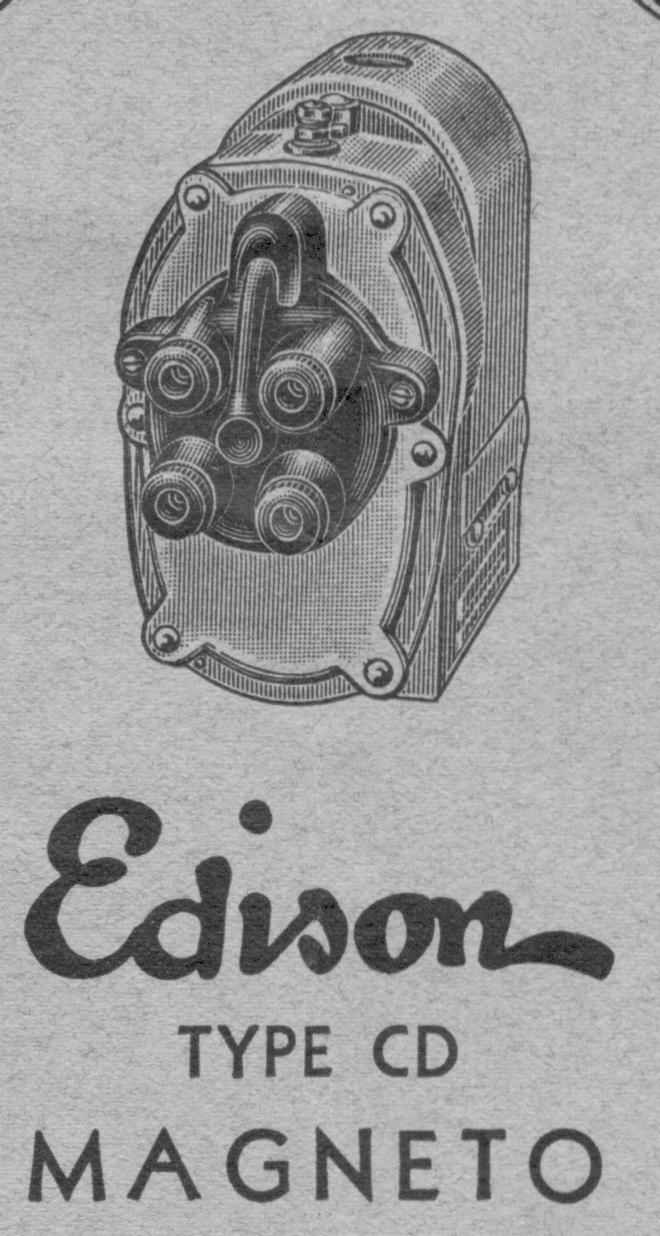
Model CD
The model C and CD came into use following the NS in the early 1930s. It was $10-$20 option available during the depression era when production costs forced Indian to make the lower cost distributor ignition standard.